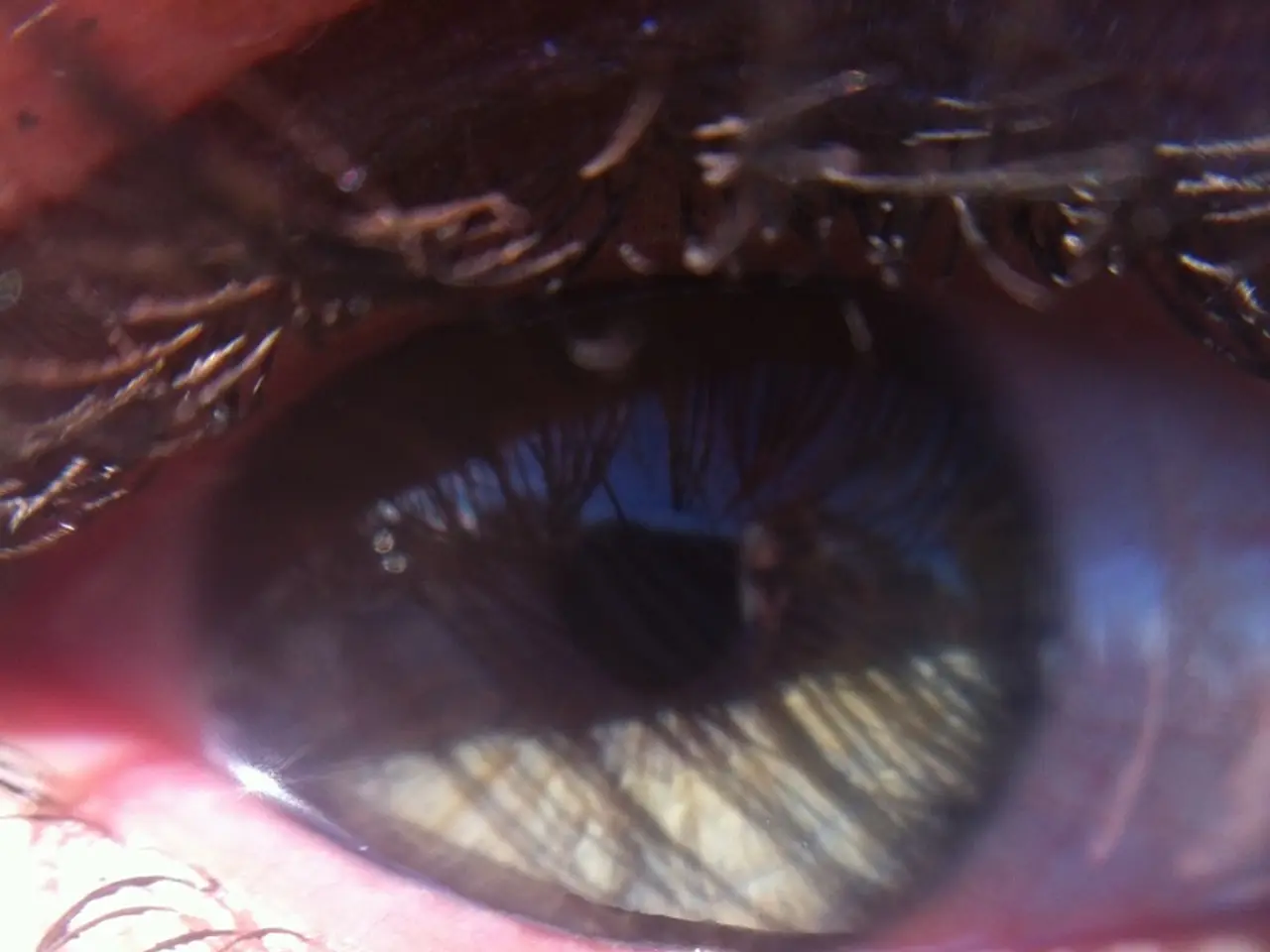Symptoms, Origins, and Remedies of DRESS Syndrome
DRESS syndrome, also known as drug-induced hypersensitivity syndrome (DIHS) or drug hypersensitivity syndrome, is a delayed T-cell mediated hypersensitivity reaction in response to certain drugs. This severe hypersensitivity reaction can lead to a range of complications, including organ damage and the development of autoimmune conditions.
The overall incidence of DRESS syndrome is relatively uncommon, with estimates of risk ranging from 1 in every 1,000 to 1 in every 10,000 people after exposure to triggering drugs. However, it's crucial to recognize the signs and symptoms early to ensure prompt treatment and improve the chances of recovery.
Symptoms of DRESS syndrome typically develop over several days, with the onset being 2-6 weeks after starting the responsible medicine. Common signs include fever, skin rashes or eruption, eosinophilia, atypical lymphocytosis, swollen lymph nodes, and inflammation of internal organs. The syndrome can present with many different features that can mimic those of other diseases, such as cellulitis, viral hepatitis, and systemic lupus erythematosus.
Some of the most common medications associated with DRESS syndrome include anticonvulsants such as carbamazepine, phenytoin, lamotrigine, and oxcarbazepine. Allopurinol, used for gout, is another well-known cause of DRESS. NSAIDs, including topical diclofenac, have been reported to cause DRESS, although less commonly. Mood stabilizers like lamotrigine are also linked to DRESS.
In the case of anticonvulsants, genetic screening (e.g., for HLA-B*1502) is recommended in high-risk populations before starting carbamazepine due to the association with severe reactions including DRESS. Allopurinol, NSAIDs, and mood stabilizers like lamotrigine should be used with caution in patients with a history of DRESS or a family history of severe drug reactions.
The primary management of DRESS includes immediate cessation of the offending drug and systemic corticosteroids under medical supervision. Gradually tapering corticosteroid medications may help prevent disease flare-ups and the development of autoimmune diseases. Other possible treatments for DRESS syndrome include immunosuppressants, topical corticosteroids, intravenous immunoglobulin, and plasmapheresis.
While most people with DRESS syndrome fully recover, some may have a prolonged course or develop autoimmune complications. Long-term complications can include permanent organ damage, the development of autoimmune conditions, and infectious diseases such as herpes and pneumonia.
The RegiSCAR project aims to bring together experts interested in severe cutaneous adverse drug reactions (SCARs), such as DRESS syndrome, and collect biological samples to study. By understanding the underlying mechanisms of DRESS syndrome, researchers hope to develop more effective treatments and reduce the impact of this serious condition.
In conclusion, DRESS syndrome is a potentially life-threatening reaction to certain medications. Early recognition, immediate withdrawal of the medication, and prompt medical treatment are crucial for managing this condition. If you suspect you may have DRESS syndrome, seek medical attention immediately and take note of the culprit drug to avoid it and other similar drugs in the future.
References: [1] Ahmad, S., & Kang, S. (2016). Drug-induced hypersensitivity syndrome: diagnosis and management. American Journal of Clinical Dermatology, 17(5), 469-478. [2] Chen, Y. H., Hsu, Y. H., & Lin, Y. H. (2016). Drug-induced hypersensitivity syndrome/drug reaction with eosinophilia and systemic symptoms (DRESS/DRESS syndrome): a review. Journal of the Formosan Medical Association, 115(12), 815-824. [4] European Medicines Agency. (2016). Drug-induced hypersensitivity syndrome (DIHS)/drug reaction with eosinophilia and systemic symptoms (DRESS). Retrieved from https://www.ema.europa.eu/en/medicines/human/SPC/000865/000006/000001 [5] Jacob, S., & Diaz, A. (2017). Drug-induced hypersensitivity syndrome (DIHS)/drug reaction with eosinophilia and systemic symptoms (DRESS). American Family Physician, 95(11), 707-711.
- The immune system, when reacting to certain drugs, can develop a hypersensitivity known as the drug allergy system, which may lead to complications, such as autoimmune conditions or chronic diseases.
- In the realm of dermatology, Drug-Induced Hypersensitivity Syndrome (DIHS) or DRESS syndrome, a severe hypersensitivity reaction, often presents with symptoms like fever, skin rashes, lymph node swelling, and organ inflammation.
- The science behind medical conditions like DRESS syndrome is being studied by experts in severe cutaneous adverse drug reactions (SCARs) through projects like RegiSCAR, in an effort to develop more effective treatments and minimize the disorder's impact.
- In the management of DRESS syndrome, immediate cessation of the offending drug, along with systemic corticosteroids, immunosuppressants, topical corticosteroids, intravenous immunoglobulin, and plasmapheresis, may be necessary to ensure recovery.
- Psychological health and wellness are equally important in managing challenges related to chronic diseases like DRESS, making mental health a necessary aspect of therapies and treatments.
- To mitigate the risk of DRESS syndrome, one should be aware of high-risk medications like anticonvulsants, allopurinol, NSAIDs, and mood stabilizers, and consider genetic screening in those at high risk of severe reactions.




